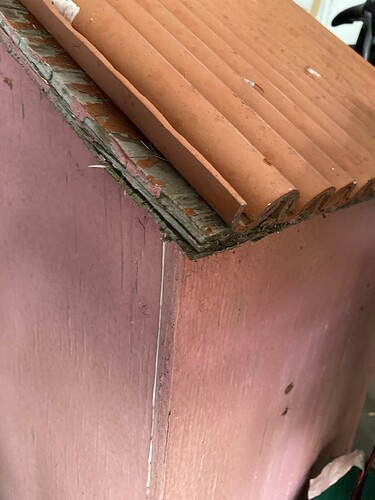Think about the structure of a piece of wood. It has a bunch of small tubes going up and down the trunk or along the branch. They bring stuff from the roots to the leaves and stuff from the leaves to the roots. The what and how much is not important to this discussion.
Think of the piece of wood, as a bunch of straws. Open end of the straw is where you cut across the log, or where you cross cut the board. The sides of the straws are where you rip cut a board or long along the length.
We think of this when we use terms as with the grain or against the grain. Also when we think of a tree that is cut down and the wood needs to dry, before we use it. Moisture from the wood will leave faster through the end grain, then through the side grain. So wood can be coated on the endgrain with something to plug the holes and slow down the moisture loss rate.
Now, turn that last one around. Don’t think of moisture loss as in drying the wood, think of moisture gain when the finished product gains moisture.
Plywood is made of several layers of thinner wood. These layers are crossed. That means there is end grain on all cuts of the plywood.
To make the project last longer, you can change your construction method. You can increase your maintenance efforts.
Construction Alternatives:
Use plywood:
Found pieces or purchase new plywood rated for exterior use.
Consider adding an edge band of wood or veneer to cover the ends of the straws.
Use an engineered wood products
Look at deck material
Perhaps look at Corian Counter top material.
Use a natural rot resistact wood
Cypress, and a few others from the US
Foreign Wood:
Teak is used on many ships and boats. The main decks of US Navy ships are teak. (I just purchased a small piece of the track from the USS New Jersey. 80 years old and 2nd reducing.)
Ipe: A south american hardwood that is imported and widely available, for decks etc. It is hard to work with, so you will be drilling pilot holes for nails, and using special saw blades to cut it.
Other types
Use commonly available US woods and adapt construction techniques. Talk to Doug, Aaron or others that are more familiar with these.
Increase maintenance.
Reapply the marine varnish annually.
Every 3 -5 years, remove paint and varnish, to bare wood. Then paint and varnish again.
General + / - : Longer life means spending more $ and time on initial materials and build. More $ and time on maintaining the project. Somewhere between the extremes on both side is a happy medium for you.
Different approach. Build from metal. Powder coat pieces and then assemble.
John
